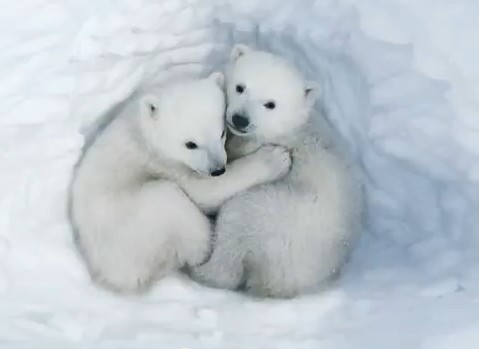With global warming continuing to melt the glacial ice caps, polar bears are losing pieces of their habitat everyday.
2. Ice caps are the traditional hunting grounds for polar bears.
Polar bears live only in the arctic and depend on the sea ice for survival. They need the sea ice to hunt, breed, mate and travel. So sea ice is fundamental to their survival for they cannot live without it.

3. Polar bears travel huge distances to find food which jeopardizes their lives and the lives of their cubs.
Through my research, I found that the dramatic decrease in the area and thickness of the Arctic sea ice due to rising temperatures has been especially hard on polar bears.
In 2004, biologists found 4 drowned polar bears in the
Over these twenty years, as the arctic ice broke up constantly, the number of polar bears that died through drowning and starvation is significantly on the rise.
4.Most importantly, female polar bears use the ice caps as dens to raise their cubs. But now, some den areas are abandoned completely.
There is also the breeding problem which must be taken into consideration. Prior to the melting of the ice caps, polar bears build dens and raise cubs all on the Arctic ice.
There is also the breeding problem which must be taken into consideration. Prior to the melting of the ice caps, polar bears build dens and raise cubs all on the Arctic ice.
More and more female polar bears are leaving the sea
ice to den on land, even in the winter.
5. The sea ice breaks up earlier in spring and frezzes later in winter which causes polar bears are going hungry for longer periods of time and resulting in cannibalistic behavior.
As more polar bears are forced to resort to the land for survival, more and more cases of cannibalism within the species is being reported.





















